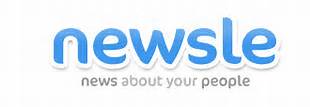Hands-Free Database Access from Vivino
 There is a cool new app out of Denmark called Vivino, that besides being just plain useful, also offers a great working example of both mobile visual interaction with database content.
Vivino lets you use your smartphone camera to take a picture of the label on any wine bottle, and have returned to you complete information about the wine. Yes, it’s a true hands-free database query.
There is a cool new app out of Denmark called Vivino, that besides being just plain useful, also offers a great working example of both mobile visual interaction with database content.
Vivino lets you use your smartphone camera to take a picture of the label on any wine bottle, and have returned to you complete information about the wine. Yes, it’s a true hands-free database query.
The data can be used strictly for educational purposes, as a way to learn more about a particular wine. At the same time, its point-of-sale implications are huge.
The heart of the technology is image recognition software that can match the photograph of a wine label to Vivino’s standing database of over 450,000 wine label images. And the database is not just for look-ups: if you like a wine, just flag it in the database with the push of a button, and the system remembers it for you.
Another feature, apparently still under development, is the use of your geo-location to identify nearby wine stores. And of course Vivino has the requisite social sharing features.
What’s also of interest to data publishers is that if Vivino can’t match a wine label, it manually researches it using its own research staff, and sends the information to the user once it makes a match. That has the triple benefit of engagement, enhancing user satisfaction and expanding the database.
Vivino is still in beta, but monetization options are plentiful. It’s worth noting that the wine database space is very crowded, but there doesn’t yet seem to be a dominant player. And if you picture yourself in a wine shop, you can see the innate appeal of being able to snap a picture and get a full profile on any bottle of wine. This is a truly powerful and productive use of mobile technology.
Vivino provides an eye-opening insight to all data publishers: sometimes you can make your existing dataset more valuable just by enhancing the ways users can access it. This is doubly important in mobile applications, where large fingers and small keys rarely make for a satisfying user experience.
People Power
There was news this week about the formation of Bloomberg Beta, a new venture capital fund sponsored by data company Bloomberg LP. One of Bloomberg Beta’s early investments is a company called Newsle, that will alert you whenever someone you specify – a friend or colleague – is in the news. This is a tough nut to crack. Searching thousands of news sources and trying to determine if the John Smith mentioned in an article is the same John Smith of interest to you is a complex undertaking. But what really intrigued me is that those who have written about Newsle see another major problem that the company faces: lack of activity. Think about it. If you import your list of Facebook friends (something Newsle encourages you to do), the chances of any of them appearing in news stories is pretty low. That means most people will sign up for Newsle and nothing will happen, not because Newsle isn’t working, but because there is no news to report. It’s hard to establish the value of your service if you’re not delivering at least a little something every now and then.

That’s why in addition to your Facebook friends, Newsle also encourages you to import your LinkedIn contacts, and while you are at it, your address book as well. Somewhat incongruously, Newsle also encourages you to follow politicians and celebrities. The hope is the more people you track, the more likely you’ll get hits.
But what if Newsle flipped its model? Instead of serving individuals who for the most part have small lists of mostly boring contacts, why not hook up with commercial data publishers, many of whom have tens and even hundreds of thousands of contacts in their databases? Publishers could then send real-time alerts out to their subscribers who are interested in specific people or any activity relating to executives at a given company. In addition to sales intelligence, these news alerts could also provide a basis for making contact with a prospect. Plus, publishers could database these news events to build deep profiles on company executives that would have evergreen value.
This could be a great opportunity for Newsle to crack its volume problem, and for data publishers to add in high-value alerting services and historical data all in one fell swoop.
That’s powerful, people!
Enigma: Disrupting Public Data
Can you actually disrupt public data, which by definition is public, and by extension is typically free or close to free? Well, in a way, you can.
 A new start-up called Enigma, which can be thought of as “the Google of public data,” has assembled over 100,000 public data sources – some of them not even fully or easily accessible online. Think all kinds of public records from land ownership, public company data, customs filings, private plan registrations, all sorts of data, and all in one place.
A new start-up called Enigma, which can be thought of as “the Google of public data,” has assembled over 100,000 public data sources – some of them not even fully or easily accessible online. Think all kinds of public records from land ownership, public company data, customs filings, private plan registrations, all sorts of data, and all in one place.
But there’s more. Enigma doesn’t just aggregate, it integrates. That means it has expended tremendous effort to both normalize and link these disparate datasets, making information easier to find, and data easier to analyze.
The potentially disruptive aspect to a database that contains so much public data is that there are quite a few data publishers with very successful businesses built in whole or in part on public datasets.
But beyond the potential for disruption, there’s some other big potential for this (I’ve requested a trial, so at this point I am working with limited information). First, Enigma isn’t (at least for now) trying to create a specific product, e.g. a company profile database. Rather, it’s providing raw data. That will make it less interesting to many buyers of existing data products who want a fast answer with minimum effort. But it also means that Enigma could be a leveraged way for many data publishers to access public data to integrate into their own products, especially since Enigma touts a powerful API.
The other consideration with a product like this is that even with 100,000 datasets, it is inherently broad-based and scatter-shot in its coverage. That makes it far less threatening to vertical market data publishers.
Finally, Enigma has adopted a paid subscription model, so it’s not going to accelerate the commoditization of data by offering itself free to everyone and adopting an ad-supported model.
So from a number of angles, this is a company to watch. I’m eagerly waiting for my trial subscription; I urge you to dig in deep on Enigma as well.
Walking Around Money
A young company called Placed is deep into Big Data analytics, but with a twist: it marries customer data with its own proprietary data to yield insights into customer behavior. Essentially, Placed wants to provide context around how customers use the mobile applications of its clients, for example, when do they use the app and where do they use it?
The “where” part of the analysis is what’s interesting. Placed could simply spit back to its clients that its customers are in certain ZIP codes or other dry demographics – interesting, like so many analytics reports are, but not particularly useful.
Instead Placed marries customer location with its own proprietary database of places – named stores, major buildings, points of interest. By connecting the two, Placed can tell its clients where mobile use of its app is occurring. For example, if a client’s customers utilize its mobile app in a competitor’s store, it might suggest competitive price comparisons. Knowing its customers frequent Starbucks and nightclubs might influence the clients’ marketing strategy or advertising campaign design. Knowing that the app is used most often when someone is walking (yes, Placed can tell you that) can be important for user interface design – you get the idea.
And therein lies an important insight. There are an endless number of companies offering Big Data analytics capabilities. But almost all of them expect their customers to bring both the problem and the data. That’s a sure recipe for commoditization, and as analytics software evolve, it’s also certain that the companies with the biggest analytics needs will decide to do the work themselves.
Solution? Big Data analytics players should bring proprietary data to the party. Placed is a perfect case study. It differentiates itself by providing answers others can’t. It adds value to its analytics by integrating proprietary and licensed data with customer data and its own optimized analytical tools. As I discussed in my presentation at DataContent 2012, there are lots of ways publishers can profit from the Big Data revolution -- even if they don't have big data themselves.
In a market where companies like Placed can make money by tracking people walking around, it behooves data publishers to walk around to some of these Big Data analytics players and suggest data partnerships that will help them stand out from the crowd.
Learning from Start-Ups
Monitoring what's going on with online start-ups is not only a great way for me to identify interesting new data-driven products and new market opportunities, it's also a touchstone for assessing how the publishing industry is doing relative to the best and brightest online innovators. Here are just three recent examples, each interesting to me in a different way:
Mixpanel, an undeniably hot and respected web analytics company recently gave an interview where the founder proudly stated that, "The next leap we're taking is being able to tie data to an actual user." If that sounds like an audience database, that's because it is. And the publishing industry has seen the opportunity in creating comprehensive user/subscriber profiles for years now, and poured significantly resources into this effort. And based on the audience database projects we've been involved in, I am pleased to report that many publishers are well on their way to databases that will truly be cutting edge in the targeting and insight they can deliver.
Another hot new start-up, Retailigence, does one thing: it helps big companies put their store inventory data online. This isn't a new concept; companies like Milo have been offering similar services to smaller retailers for years. But what is intriguing about Retailigence is that it is selling to big companies, those with big SAP applications and the like. The lesson here is that even the largest companies, those with the resources and the incentive to do it themselves, will still turn to a third-party vendor for a well-crafted solution that helps them quickly address a business need. And with all that product data (and information on what is selling where and how fast), one has to wonder if Retailigence has a data opportunity at least as large as its software opportunity.
Finally, here's an elegant data product that solves a small but important problem: how can online retailers easily offer discounts to senior citizens, college students and active duty military personnel? It's something that is done so routinely in bricks and mortar retail that nobody thinks about it. But online, it's next to impossible to do this in a seamless, hassle-free way.
Enter SheerID, a new database that helps automate this process for online retailers, right inside the shopping cart. The need is clear and the concept couldn't be simpler. What jumps out at me is that something like this is just being addressed in 2012 - a powerful proof statement that for all the amazing innovation and progress we've seen on the web, there are sizable infrastructure opportunities still to be found, and many of these opportunities will be data-driven.
So should you ever start to feel that all the good opportunities have been mined, or that you're falling behind the technology curve, take a good look around you. You're sure to find both re-assurance and opportunity just about everywhere.
